Exploring Morbius: An In-Depth Film Analysis
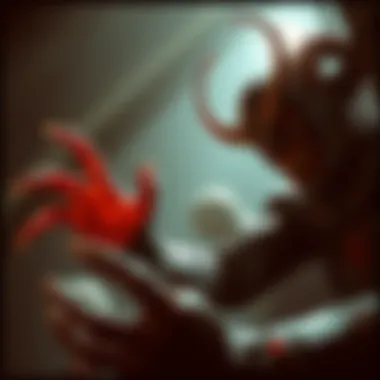
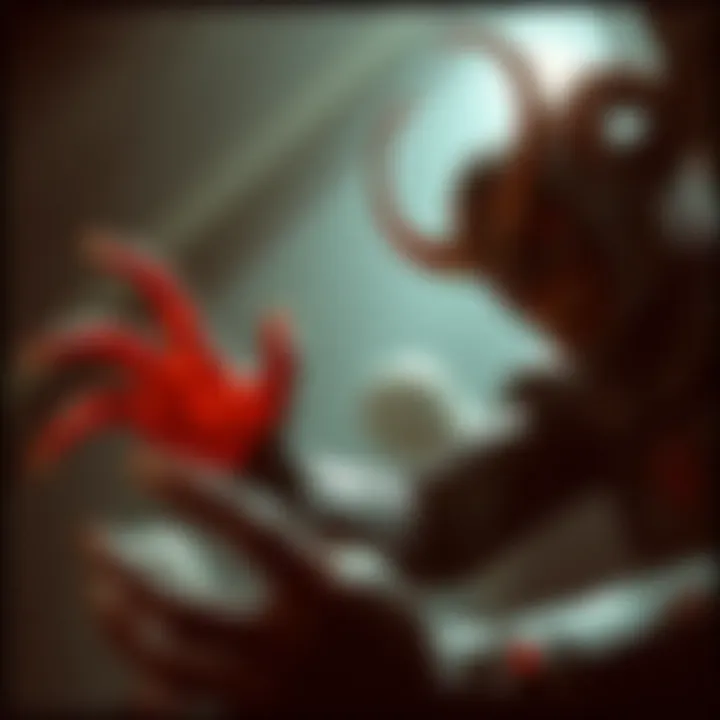
Intro
In the realm of superhero cinema, few titles have sparked as much debate as Morbius. This film, which introduces us to the character of Dr. Michael Morbius, unfolds a complex narrative rich with themes of morality, redemption, and the lengths one might go to when pushed to the brink. While it draws from deep comic roots, its cinematic execution has sparked conversations that extend beyond the screen, challenging our perceptions of what a superhero film can embody.
As audiences reel from its mixed critical reception, it becomes essential to peel back the layers surrounding the film's development, characters, and overall impact. Morbius isn’t merely a tale of a scientist turned vampire; it acts as a prism, reflecting the state of today's superhero genre amid rising competition.
This article endeavors to provide a comprehensive overview, diving deep into the film’s narrative architecture and what it reveals about contemporary storytelling. We will traverse through its thematic elements, reveal behind-the-scenes insights, consider audience reactions, and analyze its positioning within the broader cinematic universe. By the end, readers will have a rounded understanding of how Morbius contributes not only to the legacy of Marvel adaptations but also to the ongoing evolution of the superhero genre.
Utilizing esteemed references and critical analyses, we aim to equip fans, cinephiles, and critics alike with a thorough guide to understanding what makes Morbius both a unique entry point and a focal point for discussions about the dynamics of heroism, anti-heroism, and narrative maturity in film.
Prologue to 'Morbius'
The film 'Morbius,' starring Jared Leto as the titular character, is an example of the ongoing evolution of superhero narratives in contemporary cinema. Unlike traditional superheroes that often bask in the glory of their powers, Morbius presents a darker perspective — one that draws on themes of tragedy, ambition, and moral ambiguity. This unique angle not only sets the stage for engaging storytelling but also challenges how audiences view heroism and villainy.
Background on the Character
Dr. Michael Morbius first appeared in Marvel Comics in 1971, created by writer Roy Thomas and artist Gil Kane. His origin story stems from a tragic accident resulting from his obsessive pursuit to cure his rare blood disease. This relentless ambition leads him down a dark path of experimentation that transforms him into a living vampire — a being caught between human and monster. The depth of Morbius as a character lies in his duality. He embodies the struggle for redemption while grappling with the overwhelming guilt of his actions. Understanding this character's roots is essential, as it not only provides context for the film but also deepens the viewer's engagement with Morbius' journey.
Overview of the Film's Development
The cinematic rendition of 'Morbius' faced its fair share of challenges and delays, stemming back to initial announcements in 2017. Developed by Sony Pictures, known for their association with the Spider-Man franchise, the film aimed to capitalize on the booming super-hero genre. Directed by Daniel Espinosa, the movie underwent several script revisions before settling on a final version that attempted to balance both horror and superhero elements.
The casting of Jared Leto was both a calculated risk and a hopeful reunification, considering his previous venture into the superhero realm with 'Suicide Squad.' Alongside Leto, actors like Matt Smith and Adria Arjona joined the cast to portray complex characters that interact dynamically with Morbius himself.
Ultimately, 'Morbius' marks a significant entry point into the darker, more unconventional corners of the Marvel Universe. The film attempts to explore themes of sacrifice and humanity through its lead, making it a noteworthy part of the ever-growing superhero landscape.
In a world crowded with superficially heroic narratives, Morbius offers a reminder that the path to greatness often winds through shadows.
Narrative Structure
The notion of narrative structure plays a pivotal role in storytelling, particularly in film. This framework shapes not only how a story unfolds but also how audiences perceive and connect with the characters and events depicted on screen. In 'Morbius', the narrative structure is particularly crucial, weaving together elements of drama, suspense, and moral ambiguity in a way that reflects the complexity of its titular character. The structure enhances the thematic resonance of the film, allowing it to explore notions of identity, consequence, and redemption amidst the chaos of superhero antics.
Plot Summary
'Morbius' chronicles the journey of Dr. Michael Morbius, a gifted biochemist who finds himself grappling with an extraordinary yet burdensome fate. Initially set out to cure his rare blood disease, Morbius conducts a controversial experiment that inadvertently transforms him into a living vampire, acquiring supernatural abilities but also a thirst for blood. The plot thickens as Morbius wrestles with his newfound power, teetering on the brink of heroism and villainy, finally confronting his childhood friend, Milo, who undergoes a similar transformation but embraces a more sinister path. This central conflict underscores the dramatic dichotomy within Morbius himself, caught between his virtuous aspirations and the darker urges he now faces.
Character Arcs and Development
The film's character development is intricate, revealing not just the evolution of Morbius, but also the motivations and transformations of supporting figures. Morbius starts as a noble soul, a man burdened by his illness and dedicating his life to help others. His arc takes a significant twist once he embraces his vampiric side. Each decision he makes, from isolating himself to battling internal and external demons, paints a portrait of a character in a constant fight between good and evil.
Supporting characters like Milo embody this juxtaposition, reflecting alternate choices made in the face of similar circumstances. Milo’s descent into villainy contrasts sharply with Morbius’ struggle for control, highlighting how power can corrupt intentions and reshape destinies. Through compelling dialogues and pivotal moments, the film navigates various arcs that resonate with audiences, each arc serving as a vehicle for broader themes of morality and ethics in a world overflowing with supernatural possibilities.
Key Themes Explored
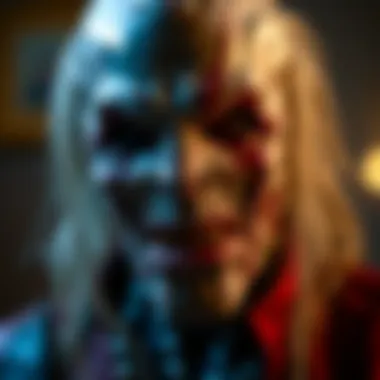

'Morbius' delves into several key themes that elevate its narrative beyond mere superhero escapism.
- Identity and Transformation: At the heart of the story is Morbius’ struggle with his identity post-transformation. The film articulates the complexities of becoming something other than oneself, showcasing how the aspirations for cure can lead to unintended consequences.
- Ethics of Science: The narrative challenges moral boundaries, questioning whether the pursuit of scientific advancement can justify the means. Morbius’ experiments serve as a vehicle for critiquing the sometimes reckless pursuit of knowledge.
- Isolation vs. Connection: Morbius’ journey highlights the theme of isolation. As he transforms, he becomes more alienated from those he loves, underscoring that even with great power comes profound loneliness.
In closing, the narrative structure of 'Morbius', through its plot summary, character arcs, and thematic undercurrents, paints a nuanced portrait of a character who obtains great abilities at a significant personal cost. It compels viewers to ponder the nature of humanity when faced with darkness and the choices that define us in monumental moments.
Character Analysis
The exploration of character analysis in 'Morbius' goes beyond just a simple examination of protagonists and antagonists. It opens a window into the complex web of motivations, backstories, and personal journeys that drive the narrative. Understanding character dynamics allows viewers to grasp how these elements resonate within the broader themes of morality, identity, and redemption.
Morbius: The Anti-Hero
Morbius, played by Jared Leto, embodies the anti-hero archetype with a rich, albeit troubled, character. Often, anti-heroes revel in chaos or seek revenge, but Morbius is rooted in his tragic origins. His transformation, spurred by a rare blood disorder and a desperate quest for a cure, underscores a profound internal conflict. The character showcases a relentless struggle that wades through the murky waters of right and wrong.
His quest for a remedy for his ailment leads him down a dark path, casting shadows over what makes a hero versus a villain. Morbius's actions stem from deep-seated pain and a desire to help, yet they spiral into violence and chaos. This duality creates a rich narrative landscape, where viewers can grapple with feelings of sympathy and disgust simultaneously. For audiences, Morbius serves as a stark reminder that the line between heroism and villainy is often blurred, like smudged ink on a once pristine page.
Supporting Characters and Their Roles
The supporting characters in 'Morbius' play significant roles in illuminating the complexities of the titular character. From Martine Bancroft, portrayed by Adria Arjona, who serves as an emotional anchor for Morbius, to Milo, played by Matt Smith, who embodies the dark consequences of unchecked ambition, these characters add layers to the narrative.
- Martine Bancroft: A brilliant scientist, her dedication to Morbius's well-being brings both warmth and tension, intensifying the stakes of his journey.
- Milo: Often seen as a foil, Milo's transformation starkly contrasts Morbius’s internal struggle. He represents the darker side of ambition and the allure of power, explicitly showcasing how such desires can corrupt.
These supporting characters give context to Morbius's decisions and reflect the series of choices that can lead one down varying paths of morality. Through their interactions, the themes of loyalty, betrayal, and the pursuit of power are skillfully woven into the tapestry of the film.
Contrasting Morbius with Traditional Superheroes
Contrasting Morbius with traditional superheroes sheds light on the unique qualities that differentiate his narrative. While conventional superheroes often embody clear-cut ideals of justice and virtue, Morbius provides a refreshing yet disturbing dichotomy. He doesn’t save the day for glory or accolades; instead, he grapples with his urges and moral dilemmas almost apologetically.
In classic superhero lore, characters such as Spider-Man or Captain America fight against moral decay with unwavering resolve and certainty. Morbius, however, often questions his own motives and justifications. He illustrates how the battle against one's inner demons can be just as significant as the external threats faced by heroes.
This complex characterization allows audiences to engage with themes of empathy, flawed heroism, and the multifaceted nature of good and evil. This rich exploration serves to enrich the cinematic experience, drawing viewers into a dialogue about the nature of heroism in a way that many traditional superhero narratives may skirt around.
“The lines between hero and villain are often drawn in the shades of grey, muddying the clarity that we often seek.”
Character analysis in 'Morbius' thus invites the audience to reflect on their own perceptions of heroism and morality. Such analysis serves to deepen the narrative while allowing a more nuanced appreciation of the film's thematic core. By engaging with these characters and their journeys, viewers can better understand the broader implications of Morbius's story, as well as its resonance within the superhero genre.
Production Insights
Production insights play a pivotal role in understanding the full impact of Morbius as a cinematic piece. They dive into the deeper layers behind the camera, revealing how choices made during budgeting, shooting, and post-production shape the final product we experience on screen. Factors such as directorial vision, casting choices, and visual effects are not just technicalities; they are the bedrock upon which the story stands. When we peel back the layers of production, we find the motivations, inspirations, and sometimes even the conflicts that inform the film's aesthetic and narrative feel.
Behind the Scenes: Directorial Vision
The directorial vision of Morbius, helmed by Daniel Espinosa, is crucial in shaping how scenes unfold. Espinosa has a unique style, often blending dark themes with subtle emotional undercurrents. His work is apparent in how he approaches the duality of Morbius—a character trapped between the desire for humanity and the pull of his vampire impulses. The choice to cast Jared Leto in the titular role reflects a desire for an actor who can portray complex internal struggles. This showcases a commitment to character depth, rather than simply focusing on blood and action.
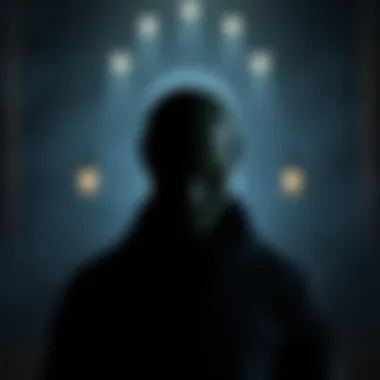
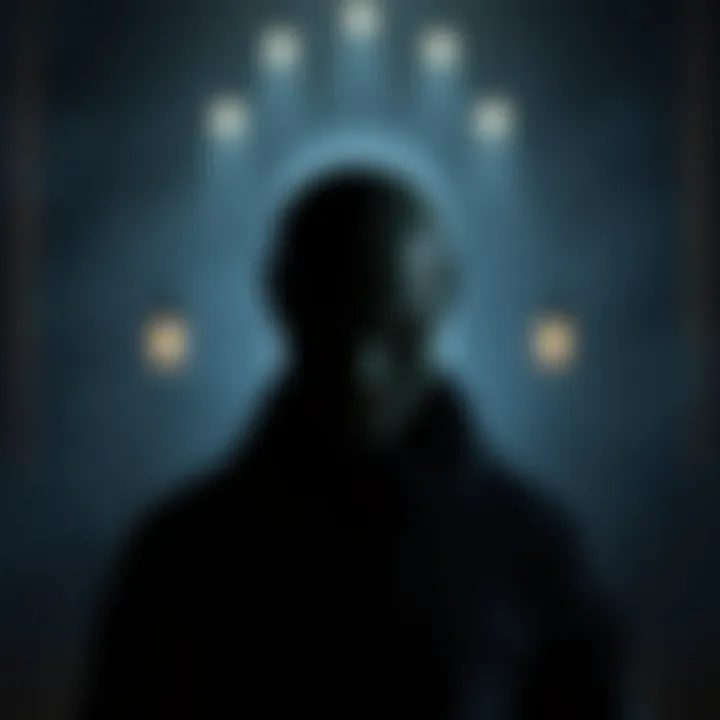
Moreover, the way scenes are constructed also provides insight into Espinosa's vision. The movement of the camera, the pacing of edits, and the overall atmosphere work together to immerse the audience into Morbius’s world. Espinosa's attention to detail shines through in scenes that juxtapose Morbius’s medical expertise against his monstrous transformation, echoing themes of struggle and despair, which are integral to the narrative.
"Every film is a reflection of its maker's vision. In Morbius, we see a dance between light and shadow that encapsulates the human condition."
— Daniel Espinosa
Casting Choices and Performances
Casting choices can make or break a film, and Morbius is no exception. Jared Leto, known for his intense method acting, brings a unique intensity to the role. His commitment to embodying the character's profound loneliness and moral dilemmas is palpable, creating a performance that resonates with audiences. The casting doesn't stop there; supporting cast includes figures like Matt Smith and Adria Arjona, who each add their own flair to the story. Matt Smith, portraying Milo, serves as a mirror to Morbius—his performance hints at the chaotic potential of friendship turned rival.
Furthermore, the chemistry between characters is carefully cultivated. Their interactions reflect real tension, which anchors the more fantastical elements of the plot. This dynamic allows for a multifaceted exploration of relationships, blurring the lines between hero and anti-hero.
Visual Effects and Cinematography
Visual effects and cinematography go hand in hand in bringing the world of Morbius to life. The team behind the film focuses on creating a visual style that reflects the inherent darkness of the narrative. With the use of both practical effects and CGI, they generate sequences that are not merely eye-candy but also serve to communicate emotions and themes.
Cinematography takes a front seat, showcasing the transformation sequences with a blend of eerie elegance and horror. Shots that rhythmically alternate between close-ups of Morbius's face and sweeping views of urban landscapes enhance the storytelling, painting the scenery as more than just a backdrop. They become a character of their own, shaping the protagonist’s journey and emphasizing his isolation.
The meticulous work of the visual effects artists drives home the film's themes of duality—both the beauty and beastliness of Morbius’s existence are captured in every frame.
In summary, the production insights into Morbius reveal that every detail matters. From the directorial approach to the casting choices and the visual storytelling, each aspect plays a critical role in developing a film that's more than just a typical superhero flick.
Critical Reception
The critical reception of a film can be akin to the drumroll before a grand performance. It sets the stage for how audiences might perceive the work and can influence its longevity in cultural discourse. For Morbius, the chatter surrounding its release was buzzing, and this section dives into the nuances of how the film was received by critics, box office numbers, and the general audience. Each of these elements not only highlights public opinion but also reveals deeper insights into the film's impact on the superhero genre.
Critical Reviews and Critique
When Morbius hit the screens, critics were poised with their pens ready to dissect. Review aggregators like Rotten Tomatoes showcased a mixed reaction, with some film critics emphasizing the film's engaging premise but critiquing its execution. In fact, the film was described as a “missed opportunity,” hinting at a potential that the narrative failed to reach.
- Positives noted include:
- Jared Leto’s committed performance as the titular character, embodying both charm and menace.
- A compelling origin story that has roots in the intricate universe of Marvel comics.
But the critics didn’t hold back from pointing out the film's shortcomings:
- The pacing of the plot was criticized, as it often felt rushed, leaving audiences wanting deeper character exploration.
- Some perceived the visual effects as lacking the polish expected from a major superhero movie, which, in many reviews, led to an underwhelming viewing experience.
"Morbius does have its shining moments, yet they often feel lost in a sea of muddled storytelling," one critic articulated, capturing the essence of divided opinions among reviewers.
This dichotomy exemplifies the struggle of translating comic lore onto the big screen, where the broader expectations of fans can hinge on nostalgia and loyalty to the source material.
Box Office Performance
In terms of box office performance, Morbius had a notably rocky start. Opening weekend figures spoke volumes as they rolled in, revealing a lack of audience enthusiasm relative to previous Marvel films. Despite the initial excitement, the film grossed only $39 million in its debut weekend in North America.


- This was concerning when compared to other superhero films from Sony, with releases like Venom and its sequel pulling in significantly higher numbers.
- Over weeks, the cumulative box office figures struggled to break the $100 million mark in the domestic market.
The underperformance raised eyebrows and led to discussions around the feasibility of further Morbius adaptations, especially considering the mounting pressures from studios to produce hits that captivate both critical and audience admiration.
Audience Feedback and Interpretations
How audiences interpreted Morbius is a fascinating glimpse into collective fan sentiment. Social media platforms like Reddit and Facebook were alight with varied responses. Some fans found value in the film’s approach to anti-heroism, celebrating its attempt to diverge from traditional narratives.
- On the flip side, many fans voiced disappointment, feeling that the character deserved a better cinematic treatment. Some of the comments included:
- "I loved the Morbius comics, but this felt like a rushed adaptation with too much left unsaid."
- "It had potential, but it seemed to fizzle out like soda left open too long."
This disunity in audience reception provides insight into what fans crave: a cohesive story laced with depth and authenticity. Overall, Morbius ignited discussions that reveal the complexities of fandom. They want not just entertainment but a reflection of beloved characters crafted with care and intent.
Taking a step back, the reception of Morbius invites an important conversation about the larger superhero landscape. Critics and audiences alike remain eager for films that not only entertain but also resonate on a narrative level—offering exploration of character development, ethical dilemmas, and the consequences of their choices in a way that honors the depth of comic origins.
For further exploration of the critical reception of films like Morbius, you can check out Rotten Tomatoes, Box Office Mojo, and discussions on Reddit’s Movie Forums.
Cinematic Context
Understanding the cinematic context of 'Morbius' entails examining how it fits within the wider landscape of superhero films and its implications for future superhero narratives. As audiences flock to theaters for the latest adaptations of comic book heroes and villains, it becomes paramount to appreciate how each film speaks not just to fans of the source material, but to broader societal themes and cinematic trends.
Placement within the Marvel Universe holds significant weight. 'Morbius' arises from the rich tapestry of Marvel lore, intertwining stories of characters who often roam the blurry lines of heroism and villainy. Acknowledging its connections—both explicit and implicit—to established franchises can enhance our understanding of character motivation and narrative choices. The shared universe concept has transformed the superhero genre; it encourages a transference of character dynamics from one film to another.
Also, the point of comparison with other superhero films cannot be overlooked. 'Morbius' operates in a crowded field, where every release garners scrutiny against its predecessors. By placing it alongside traditionally celebrated films, audiences can better discern what works and what doesn't in its portrayal of darker themes, anti-heroic attributes, and reluctant moralities. 'Morbius' aims for a unique flavor in the superhero dish, but whether it succeeds—or simply serves a cold dish—hinges on its ability to stand apart or blend in.
Finally, a discussion of its legacy and future prospects broadens the narrative. As the comic book landscape is ever-evolving, the possibilities for Morbius in future cinematic adaptations remain tantalizing. Each new film not only reinforces existing fan expectations but also opens new avenues for characterization and storytelling. The direction of sequels, crossovers, or spin-offs could profoundly affect perceptions of Morbius, both for hardcore fans and new viewers alike.
"Every film is part of a larger conversation within its genre and with its audience, and 'Morbius' wants to join that dialogue, despite its rocky start."
By tinkering with the essence of what it means to be a hero or villain, 'Morbius' plays with psychological depth against a backdrop of superhero grandeur, further complicating the cinematic context in which it is situated. This exploration will ultimately enrich our understanding of the character and the narrative as a whole.
Closure
As we draw the curtain on our exploration of Morbius, it's clear that this film represents a significant chapter in the evolving landscape of superhero cinema. In this final segment, we highlight some key elements that have shaped its narrative and cultural impact.
Summation of Key Points
- Character Origin: At its heart, Morbius takes a deep dive into the complicated life of Michael Morbius, showcasing his transformation from a renowned scientist seeking a cure for his rare blood disease to a tragic anti-hero caught in a mythos of vampirism. This origin story not only resonates with fans of comics but also illustrates the broader theme of the duality of man—good versus evil.
- Narrative Choices: The film's narrative structure oscillates between intense action sequences and poignant moments of self-reflection, allowing audiences to grapple with Morbius's internal conflicts. The pacing, although critiqued, serves to emphasize the emotional weight of Morbius's choices and their consequences.
- Cinematic Techniques: Visual effects and cinematography play a crucial role in how Morbius tells its story. The dark aesthetic aligns with the character's mythos, effectively drawing the viewer into a world that feels both thrilling and foreboding.
- Public Reception: Despite a mixed bag of critical responses, audiences’ interpretations have varied greatly. Some found a relatable undercurrent in Morbius's striving for redemption, while others critiqued the execution. This dichotomy paves the way for rich discussions about audience expectations in the superhero genre.
- Future Potential: The film's placement within the broader Marvel Universe and its connections to other narratives ensure that Morbius holds potential for further exploration. The cinematic world is constantly evolving, drawing in new fans and reinvigorating older ones with interconnected storylines.
"Morbius represents not just a character but a transformation, showcasing the shadowy corners of heroism and villainy alike."
The Future of Morbius in Cinema
Though Morbius received its share of skepticism from critics, the future looks ripe with possibilities. Given the perpetual evolution of the superhero genre, there are several avenues to consider:
- Continuation of the Story: Whether through sequels or crossovers, there is tangible interest in delving deeper into Morbius's universe. The premise lends itself to further exploration of his relationships with other characters in the Marvel realm.
- Potential of Spin-offs: Characters introduced in Morbius may be primed for their own narratives, helping to expand the cinematic universe. Parallel stories could enrich the existing lore, offering fans more layers and complexity.
- Digital Presence: The rise of platforms such as streaming services provides another opportunity for the Morbius narrative. Mini-series or adaptations may take the character into fresh directions and reach audiences in innovative ways.
Ultimately, with the right creative vision, Morbius can transcend its current status and find a more established footing in cinematic history, feeding into a growing appetite for darker, more morally ambiguous tales in the superhero genre. The evolution of this narrative offers a fascinating lens through which to consider not just the character, but the nature of heroism itself.



